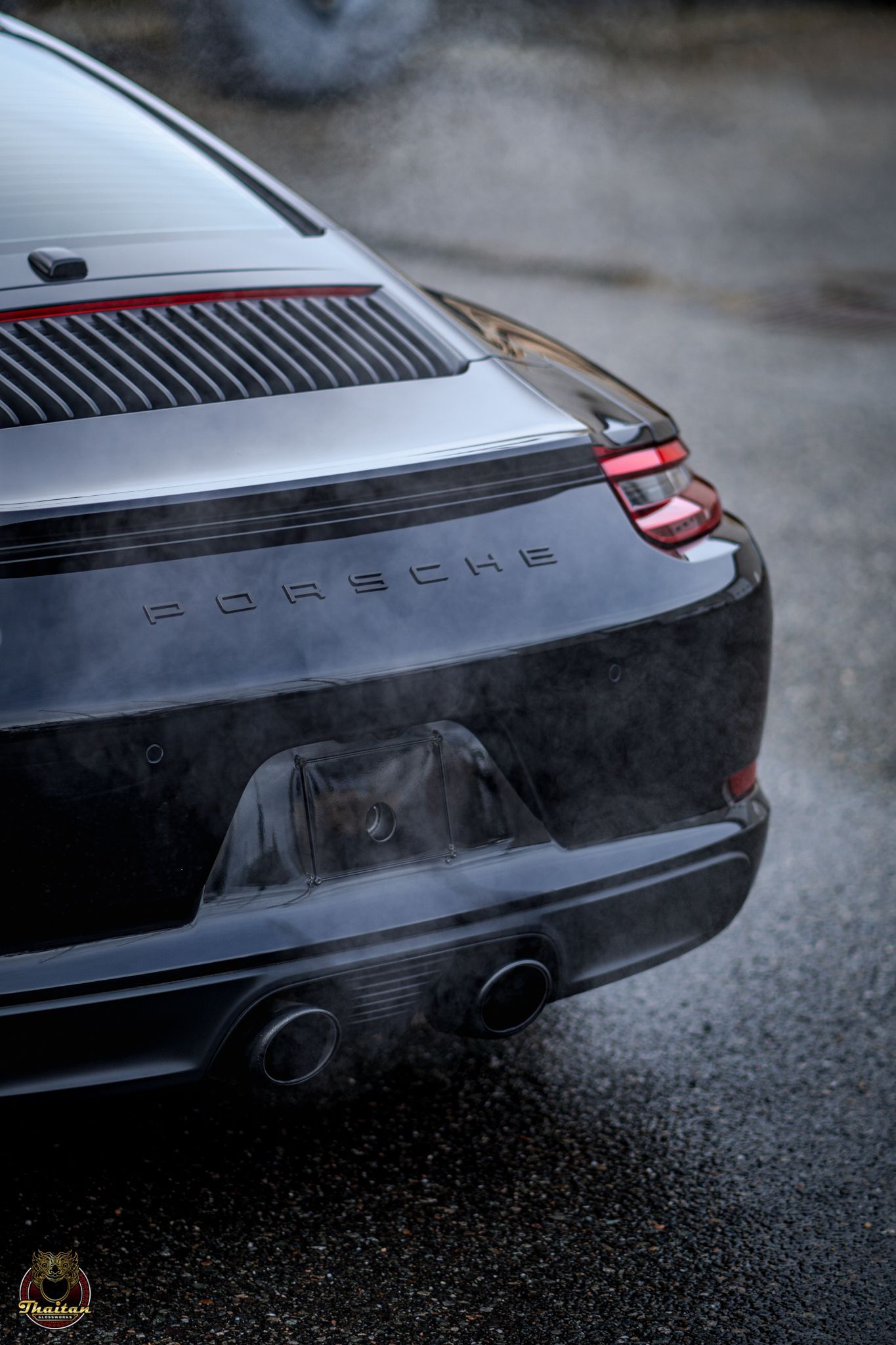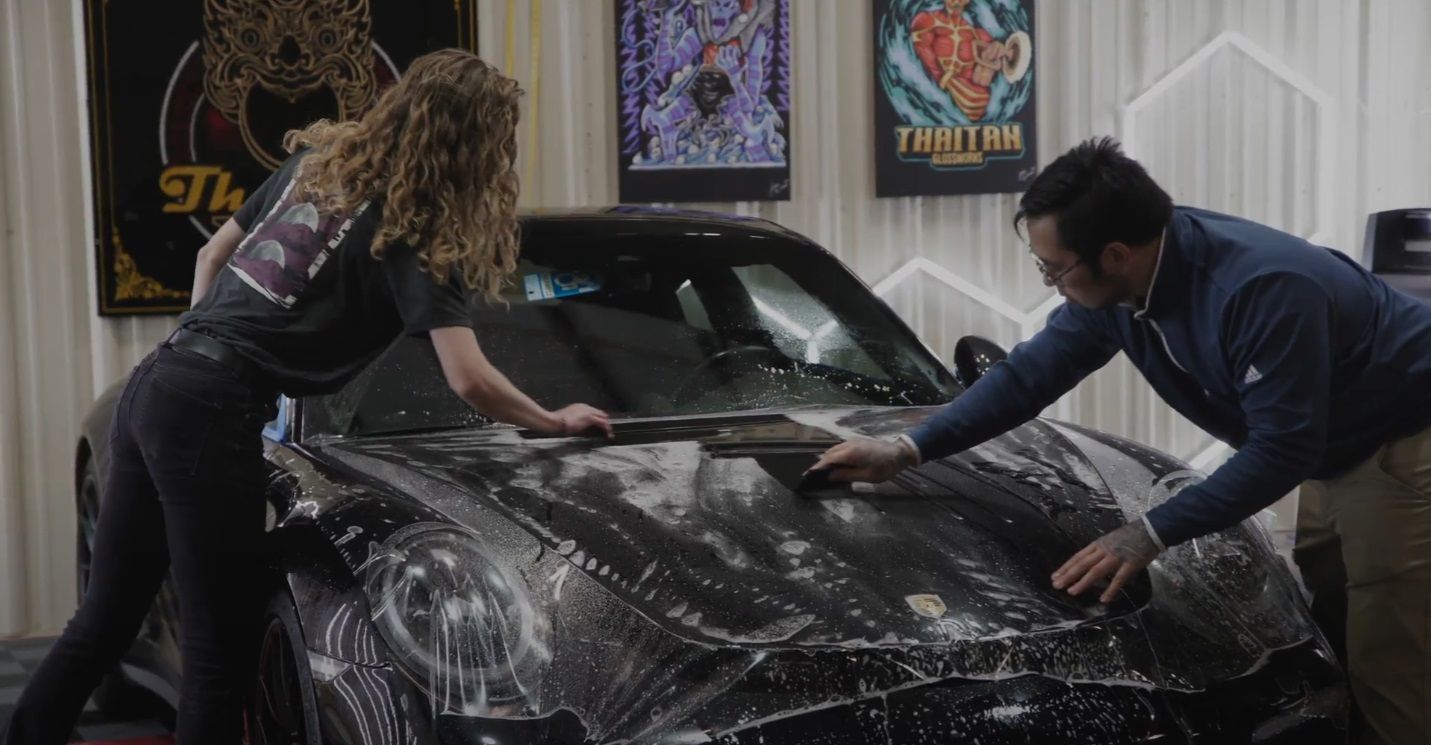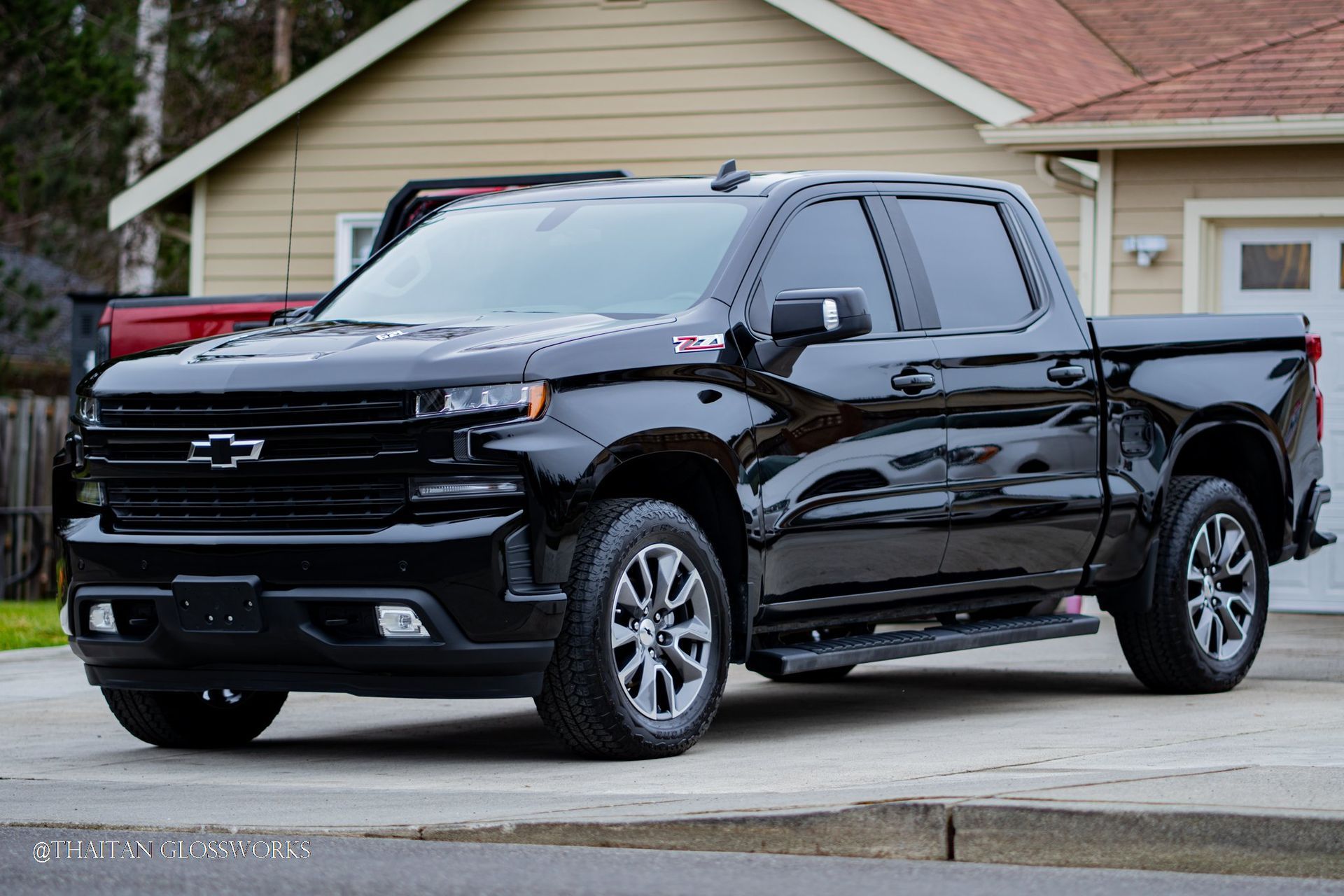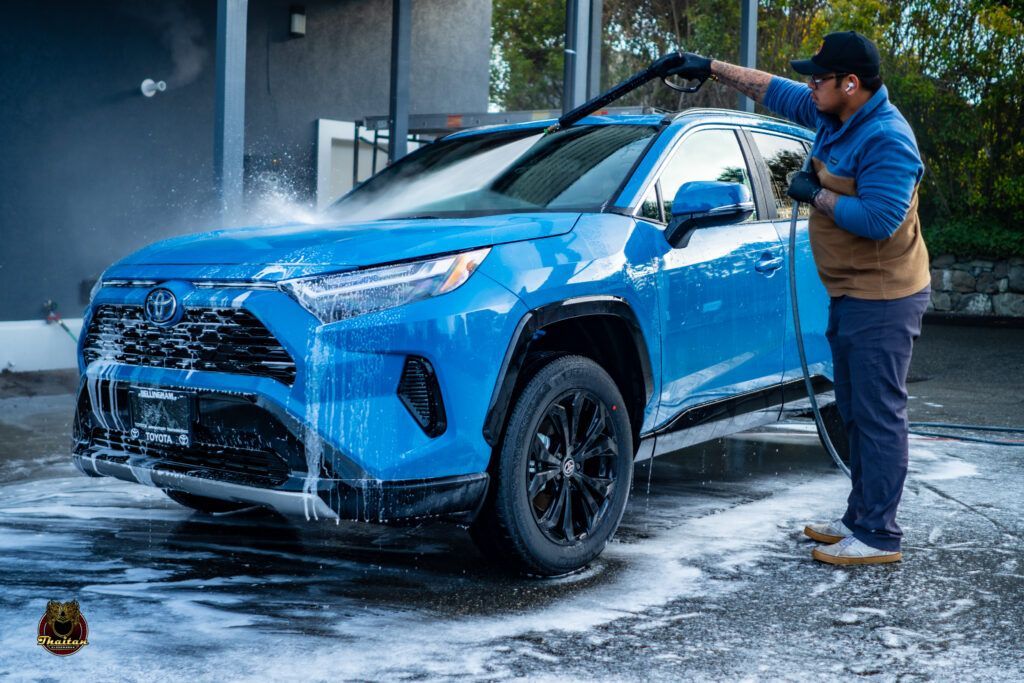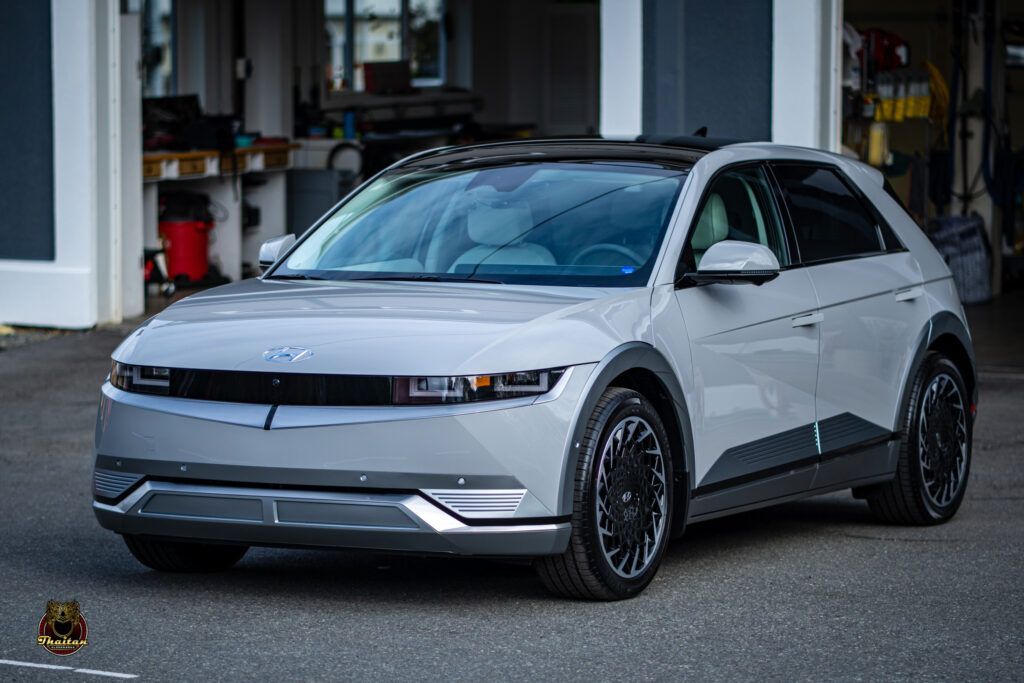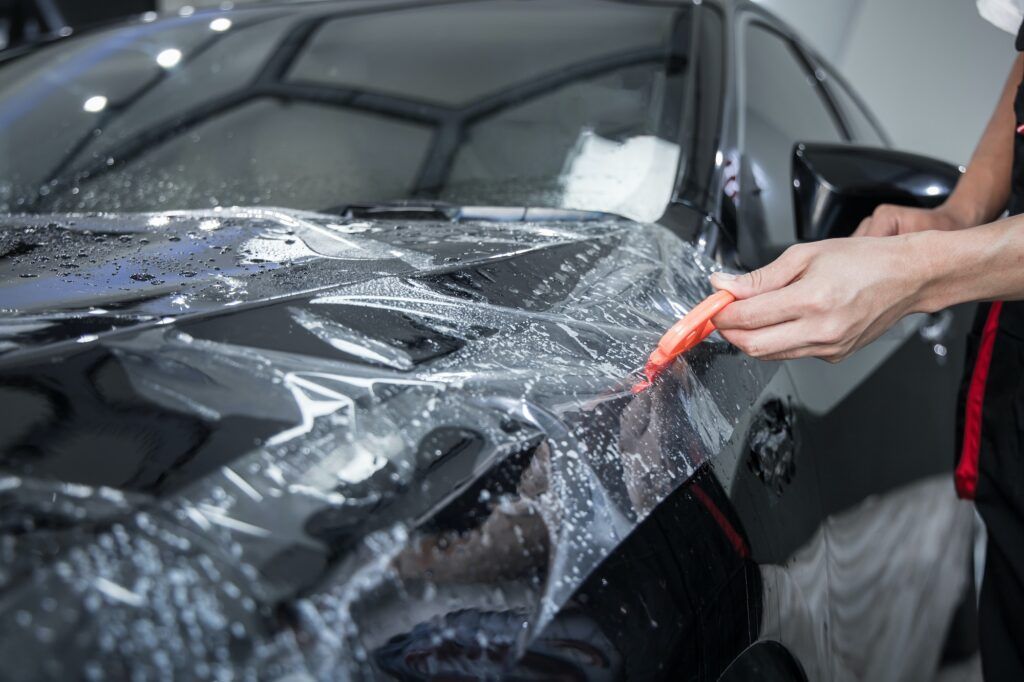Heat Resistance in Ceramic Coatings: Properties and Benefits Explained
Are you tired of watching your car's paint fade and deteriorate under the Pacific Northwest sun? If you're like many vehicle owners in Anacortes and the surrounding areas, protecting your investment might feel overwhelming, especially with so many products available. Fortunately, there's a solution that goes beyond the usual waxes: ceramic coatings. These innovative coatings not only enhance your car's appearance but also provide incredible protection against various environmental stressors—including heat. They are designed to withstand extreme temperatures and keep your paint looking pristine for years to come. In this article, we'll explore the fascinating world of ceramic coatings, examining their key properties, benefits, and how they can dramatically improve your car care routine.
Key Takeaway: Ceramic coatings exhibit impressive heat resistance, with most capable of withstanding temperatures up to 1400°F (760°C) without damaging your vehicle's paint. Some advanced formulations even claim protection against heat levels reaching up to 2192°F (1200°C), making them ideal for vehicles exposed to extreme conditions
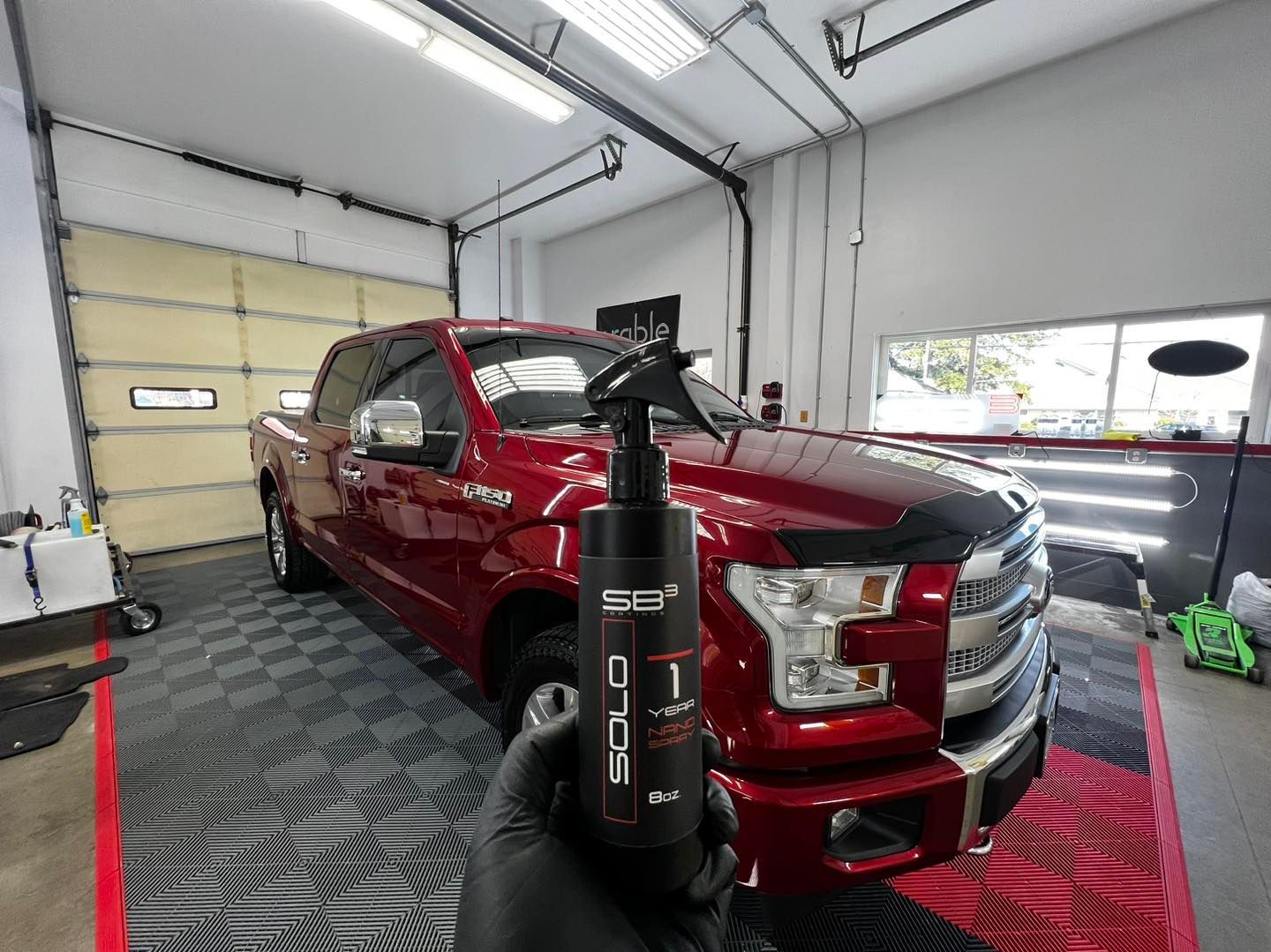
The Fundamentals of Ceramic Coatings
At its core, a ceramic coating is a blend of liquid polymers designed to adhere tightly to various surfaces, creating a protective layer that far exceeds the capabilities of traditional waxes or sealants. These coatings chemically bond with your vehicle's paint, resulting in a permanent or semi-permanent shield that enhances both appearance and longevity. When applied by professionals, you can achieve a flawless finish that not only looks outstanding but also stands up to the test of time.
One of the standout features of ceramic coatings is the high concentration of silica (SiO2) mixed with other advanced compounds. This elemental combination forms an incredibly hard, glass-like surface that acts like armor for your vehicle's exterior. The benefits are clear: by investing in professional ceramic coating application, you're enhancing your car's resilience against environmental stressors while protecting your investment.
Key Properties
To understand how this material performs, let's examine its three key properties:
Micro-Scratch Resistance - Ceramic coatings boast a pencil hardness rating that can reach as high as 9H, which is comparable to quartz. This means they offer excellent protection against minor scratches and abrasions that can occur from daily use, whether you're navigating gravel roads in Skagit County or dealing with parking lot dings.
Hydrophobicity - Perhaps one of the most appreciated characteristics, this property allows water and other liquids to bead up and roll off the surface, rather than settling in and causing damage. This hydrophobic effect keeps surfaces cleaner and makes washing your car significantly easier—a real advantage during our Pacific Northwest rainy seasons.
UV Protection - As a barrier against ultraviolet rays, ceramic coatings help maintain your vehicle's vibrant color while preventing oxidation and fading over time. This is particularly valuable for vehicles regularly exposed to sun and weather conditions throughout Washington State.
With these fundamental properties in mind, it's clear why so many car enthusiasts and meticulous vehicle owners invest in ceramic coatings for their cars.
Understanding how these coatings manage heat resistance will further illustrate their effectiveness and durability in varying conditions.
Heat Resistance Properties of Ceramics
Heat resistance is a defining characteristic that not only differentiates ceramic coatings from other types of vehicle protection but also enhances their appeal for discerning car owners. The average ceramic coating can withstand temperatures reaching up to 1400°F (760°C), with advanced formulations capable of enduring extreme limits around 2192°F (1200°C). This remarkable thermal stability means these coatings won't break down or deteriorate easily, even in demanding conditions like hot summer days or during intense driving scenarios.
Under the Hood: The Science Behind It
The secret behind this extraordinary heat resistance lies in the atomic structure of silicon dioxide (SiO2), which forms the backbone of many ceramic coatings. The strong, covalent bonds within silicon dioxide are key to maintaining structural integrity when exposed to high temperatures. Unlike other protective solutions that might weaken or degrade under heat, the bonds in SiO2 remain stable. This property effectively prevents thermal degradation, meaning your vehicle's paint remains protected and vibrant even in scorching weather.
To put this into perspective, consider Gtechniq's Crystal Serum Ultra—a product noted for its exceptional thermal resilience. Customers have consistently praised its performance, highlighting how it maintains its protective qualities over time. This means that whether you're parked under the summer sun or navigating through hot conditions, your coating is working to shield your car from damage.
Understanding these scientific principles is important, but it's crucial to comprehend how these properties translate into practical benefits for daily drivers and car enthusiasts alike.
The implications of this heat resistance extend far beyond simply surviving warm weather. It also contributes to preserving your car's aesthetics over time, keeping colors bright and preventing unsightly fading due to UV rays. Additionally, the durability afforded by high-temperature resistance reduces the need for frequent touch-ups or detailing sessions. Fewer intensive maintenance sessions mean less exposure to harsh chemicals found in cleaning products that could potentially harm underlying paint finishes.
When considering ceramic coatings for your vehicle, think beyond just heating capabilities. Focus on how they can enhance your overall car care routine—reducing maintenance time while ensuring lasting beauty and protection. Embracing this technology will ultimately result in a smarter investment for car owners who value both appearance and longevity.
Practical Benefits of Heat Resistance
One of the most remarkable benefits of heat-resistant ceramic coatings is their ability to preserve a vehicle's aesthetics even in challenging conditions. During the summer months, when temperatures soar and UV exposure intensifies, a professionally applied ceramic coating acts as a shield against sun-induced wear. Even in the Pacific Northwest, where intense summer sun can be deceiving, these coatings ensure that your car's paint remains vibrant and intact.
When cars are exposed to high ambient temperatures or intense engine heat, traditional paint jobs can degrade, leading to unsightly blemishes. Conversely, ceramic coatings feature a protective barrier that prevents oxidation, shielding the paint from harmful UV rays and ensuring that the vehicle continues to look showroom-ready for years.
Durability and Performance
Consider those summer road trips—we've all experienced moments when our vehicle's painted surfaces face the brunt of relentless sun exposure. A car left under such conditions can easily experience paint fading or cracking if it lacks protective measures. But with high-quality ceramic coatings, this scenario transforms completely. They act as an insulator against both heat and infrared radiation, essentially blocking the thermal energy that would otherwise penetrate deep into the paint layers.
For example, one satisfied Thaitan Glossworks customer shared his experience driving through desert climates: "After treating my car with ceramic coating, I no longer worried about parking outside all day. It remained immaculate despite the scorching sun—it's as if it had its own built-in defense system!"
Understanding these practical benefits of ceramic coatings related specifically to heat resistance allows for an appreciation of their role in comprehensive vehicle protection, maintaining both functionality and aesthetic appeal under extreme conditions.
Application Areas: From Aerospace to Automotive
In the aerospace sector, the immense benefits of ceramic coatings are particularly evident. Aircraft turbine blades endure extreme temperatures, often reaching above 1,600°C (2,912°F). Ceramic coatings provide a protective layer that helps these critical components withstand the rigors of flight without succumbing to damage. This ensures safer operations while optimizing performance and extending engine lifespan.
The automotive industry is another prime beneficiary of these advanced materials. Beyond improving a vehicle's exterior aesthetics, ceramic coatings play a vital role in protecting critical engine components like exhaust systems. These parts experience relentless heat, frequently exceeding 1,200°C (2,192°F). With durable ceramic coatings, manufacturers can enhance component durability and reduce wear caused by thermal fatigue.
Imagine driving your car with reduced maintenance concerns—thanks to ceramic coatings, this becomes more achievable as they form an effective barrier against harsh conditions.
In industrial settings, ceramic coatings are applied to furnace linings to support high-efficiency operations at temperatures around 1,500°C (2,732°F). By minimizing energy losses and wear due to corrosion and oxidation, these coatings promise longer equipment life while reducing operational costs substantially. Similarly, in marine applications, they protect surfaces exposed to saltwater and high temperatures from corrosion and degradation while managing heat exposure efficiently.
Throughout all these examples—from aerospace to automotive and beyond—ceramic coatings provide essential solutions by offering not only heat resistance but also enhanced longevity and performance.
Popular Heat-Resistant Ceramic Coatings
When choosing the right heat-resistant ceramic coating for your needs, several products stand out due to their remarkable properties and durability.
Gtechniq Crystal Serum Ultra is a coating famous for its extreme longevity and ability to withstand high temperatures. It forms a resilient layer that not only protects against everyday wear but also holds strong under intense heat, making it ideal for automotive enthusiasts who demand superior performance.
Ceramic Pro 9H is another excellent choice, noted for its scratch resistance and thermal resilience. It's particularly popular in both automotive and marine applications, where harsh conditions can damage lesser coatings. The "9H" in its name denotes its hardness rating, which translates to superior protection against scratches and impacts—qualities any meticulous vehicle owner would appreciate.
Opti-Coat Pro Plus is a noteworthy coating that offers robust protection not just against heat but also contaminants and UV damage. Its thermal stability ensures that the coating remains effective even when exposed to intense sun, preserving your vehicle's gloss and finish over time.
At Thaitan Glossworks, we work with premium ceramic coating brands that have proven their effectiveness in our Pacific Northwest climate. Each coating requires meticulous surface preparation and professional application to achieve optimal results.

Applying Ceramic Coatings Effectively
Proper application is essential to ensure that ceramic coating adheres correctly and provides maximum protection for your vehicle. Skipping necessary steps can compromise the coating's integrity and reduce its longevity, leaving your investment less protected than it could be. Let's break down each component of the professional application process.
Professional Application Process
Surface Preparation sets the stage for success. Before applying ceramic coating, the vehicle must be thoroughly cleaned using pH-neutral soap to remove any dirt, oil, or wax residue that might interfere with bonding. Every trace of contamination must be removed to ensure the coating can form a strong connection with the paint.
Paint Correction addresses any imperfections before coating application. If scratches or swirls are present, they will be sealed under the ceramic coating. Professional paint correction involves buffing out these imperfections and smoothing the surface for an impeccable finish. This step enhances both clarity and gloss while ensuring optimal coating performance.
Coating Application requires following manufacturer specifications precisely. Professional technicians apply the coating using specialized applicators in small, controlled sections for maximum control and even coverage. Working methodically ensures consistent appearance throughout the vehicle.
Curing Time allows the coating to achieve its strongest bond with the paint surface. Professional applications adhere to specific product guidelines for curing times—this could range from several hours to days depending on environmental conditions and product requirements. Rushing this step can diminish long-term performance.
By following each step meticulously during professional application, you're ensuring robust protection and sustained shine that keeps your vehicle looking exceptional while safeguarding it against environmental wear.
Final Thoughts
Investing in a high-quality, heat-resistant ceramic coating represents more than just vehicle protection—it's a commitment to preserving your investment and maintaining the pristine appearance you work hard to achieve. For discerning vehicle owners in the Anacortes area and throughout Skagit County, ceramic coatings offer unparalleled protection against the unique challenges our Pacific Northwest environment presents.
The remarkable heat resistance properties we've explored—capable of withstanding temperatures up to 1400°F and beyond—translate directly into real-world benefits for your daily driving experience. Whether you're navigating summer heat, protecting against UV damage during those deceptively intense Northwest sunny days, or simply wanting to reduce the time and effort required for vehicle maintenance, ceramic coatings deliver measurable value.
At Thaitan Glossworks, we understand that your vehicle represents both a significant financial investment and a source of personal pride. That's why we specialize in professional-grade ceramic coating applications using only premium products proven to deliver long-lasting protection and stunning results. Our meticulous attention to detail ensures that every coating we apply meets our exacting standards and exceeds your expectations.
The science behind ceramic coatings—from their advanced silicon dioxide formulations to their remarkable thermal stability—demonstrates why leading industries from aerospace to automotive rely on these innovative solutions. When you choose professional ceramic coating application, you're accessing the same advanced protection technology used in the most demanding applications worldwide.
Don't let environmental stressors gradually diminish your vehicle's appearance and value. Take action today to protect your investment with a solution that's engineered to perform and built to last. Contact Thaitan Glossworks to schedule your consultation and discover how our professional ceramic coating services can transform your vehicle's protection and appearance for years to come.
Your car deserves the best—and so do you. Experience the difference that professional-grade ceramic coating can make.

